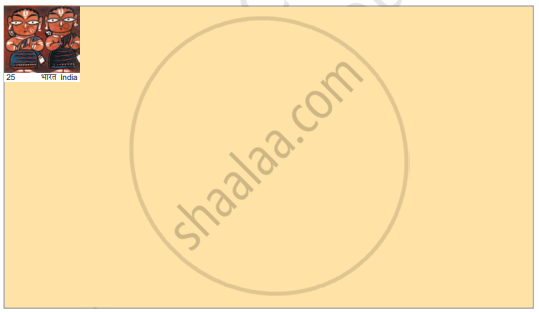Advertisements
Advertisements
Question
A floor is 40 m long and 15 m broad. It is covered with tiles, each measuring 60 cm by 50 cm. Find the number of tiles required to cover the floor.
Solution
Length of floor (l) = 40 m
breadth of floor (b) = 15 m
∴ Area of floor = l × b = 40 × 15 = 600 m2
Length of one tile = 60 cm =`6/10` m
and breadth = 50 cm = `5/10` m
∴ Area of one tile = `6/10xx5/10`
= `30/100=3/10"m"^2`
∴ Number of tiles =`"Total area of floor"/"Area of one tile"`
= `600/(3/10)=(600xx10)/3=2000`
APPEARS IN
RELATED QUESTIONS
D is the mid-point of side BC of ΔABC and E is the mid-point of BD. if O is the mid-point
of AE, prove that ar (ΔBOE) = `1/8` ar (Δ ABC).
If ABC and BDE are two equilateral triangles such that D is the mid-point of BC, then find ar (ΔABC) : ar (ΔBDE).
ABCD is a parallelogram. P is any point on CD. If ar (ΔDPA) = 15 cm2 and ar (ΔAPC) = 20 cm2, then ar (ΔAPB) =
Length of a rectangle is 30 m and its breadth is 20 m. Find the increase in its area if its length is increased by 10 m and its breadth is doubled.
Who had the bigger piece? How much bigger?
This stamp has an area of 4 square cm. Guess how many such stamps will cover this big rectangle.

Measure the length of the floor of your classroom in meters. Also, measure the width.
- So how many children can sit in one square meter?
The King was very happy with carpenters Cheggu and Anar. They had made a very big and beautiful bed for him. So as gifts the king wanted to give some land to Cheggu, and some gold to Anar. Cheggu was happy. He took 100 meters of wire and tried to make different rectangles.
He made a 10 m × 40 m rectangle. Its area was 400 square meters. So he next made a 30 m × 20 m rectangle.
- What other rectangles can he make with 100 meters of wire? Discuss which of these rectangles will have the biggest area.
A magazine charges Rs 300 per 10 sq cm area for advertising. A company decided to order a half page advertisment. If each page of the magazine is 15 cm × 24 cm, what amount will the company has to pay for it?
Find all the possible dimensions (in natural numbers) of a rectangle with a perimeter 36 cm and find their areas.
